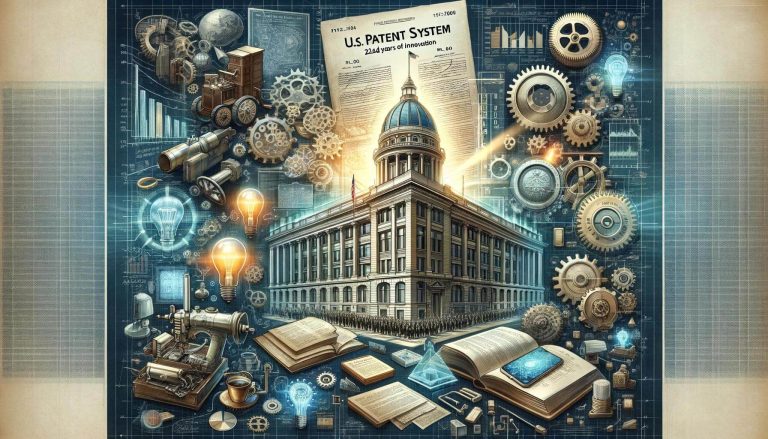In a world where history often seems to be on a treadmill, the American patent system offers a captivating account of innovation, struggle, and the relentless march toward progress. From its inception more than two centuries ago to the contemporary debates that shape its contours, the patent system has played a pivotal role in the fabric of American ingenuity. As we approach its 225th anniversary in 2025, let us take an insightful and whimsical look down memory lane, examining how history is repeating itself within this remarkable institution and what the future may hold.
George Washington's vision: the patent system
On April 10, 1790, the United States established its own patent system. This law laid the foundation for what would become a global beacon of innovation. George Washington anticipated the nation's hunger for progress. He therefore stressed the importance of encouraging local and foreign inventions. Meanwhile, Abraham Lincoln added his point. He declared that the patent system fueled the fire of genius. Together, these wise pronouncements have supported a regime for 224 years. As a result, this system has become a cradle of groundbreaking innovations.
Key reforms: developing the patent landscape
- 1790: The dawn of the patent system in the United States.
- 2011 and 2013: The patent landscape was reshaped by significant legal reforms aimed at updating the system for an era of rapid technological development.
Although these milestones are centuries apart, they share a common thread: the relentless pursuit of a balance between protecting inventors and the public's thirst for innovation.
The Genius Decade: 20-Year Monopolies
In essence, the US patent system gives inventors a 20-year monopoly on their creations, in exchange for full disclosure. The government designed this contract between genius and society to stimulate innovation while ensuring ultimate public access. However, the system has faced its share of paradoxes and controversies:
- The Wright Brothers, pioneers of aviation, were accused of stifling progress through their aggressive defense of patents.
- Recent legislative amendments and proposals have sparked debates about whether the system still serves its original purpose or has become a tool for legal battles that hinders innovation more than it helps it.
The 21st century: The patent system at a crossroads
The twenty-first century has presented new challenges:
- The America Invents Act and subsequent reforms were intended to reduce litigation. However, they raised concerns about weakening protections for small inventors.
- The rise of “patent trolls” and lobbyist-driven initiatives threatens the balance between protection and innovation.
Despite these obstacles, the importance of the patent system as a driver of national innovation cannot be overstated. It stands as a testament to human ingenuity and entrepreneurship, even as it navigates the choppy waters of modern legislative and economic challenges.
Towards 2025: Envisioning the Future of Patents
As we approach the 225th anniversary of the patent system in 2025, we stand at a crossroads. The fundamental goals of promoting innovation and protecting inventors are more important than ever. However, they face threats from vested interests and a changing technological landscape that could weaken the effectiveness of the system.
History shows us that the US patent system has been both a catalyst for innovation and a battleground for competing interests. The challenges you face today are not new; It's simply the latest iteration in a long line of hurdles. However, the system has constantly found a way to adapt and evolve, driven by the very innovation it seeks to protect.
Ultimately, the future of the US patent system may depend on its ability to remember its past. By remembering the wise goals of its founders and pivotal moments in its history, the system can overcome modern challenges while focusing on maintaining the delicate balance between protecting inventors and encouraging innovation. As we look to 2025, one thing is clear: the story of the US patent system is far from over. The book's next chapter, shaped by the lessons of the past and the pressures of the present, promises to be as compelling as any before.

